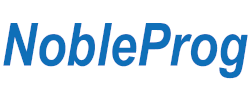- Presencial
- 14 horas
- Aula Virtual
- No disponible
This 2 day course is suitable for any IT professionals who are interested in using the Waterfall model and how people have traditionally tried to deal with its shortcomings - including, but not limited to, Agile approaches.
The aim of the 1st day is to give an overview of these approaches enabling you to decide what might suit them in your environment.
The 2nd day looks at project management techniques and good practices that have been identified from Agile, and which can be applied in a Waterfall or Agile context.
Managing Software Projects in a Waterfall Context
1. Introduction to Waterfall
a. Historical Context
- Winston Royce
- Background in manufacturing processes
b. Waterfall stages
- Requirements gathering
- Design
- Implementation
- Verification
- Maintenance
c. Waterfall challenges
- Handling change
- Distance between business knowledge and implementation
- Storing risk to late in the lifecycle
- Prioritisation of scope
d. Summary of reactions to Waterfall model
- Embrace – Waterfall approaches, eg SSADM
- Cope – V-Model
- Adapt – Incremental
- Reject – Agile
- Enhance – Lean
2. V-Model coping strategies for Waterfall delivery
a. Early verification and validation
- Cost of finding late
- Reviews and inspections
- Static analysis
b. V-Model test stages
- Unit/Unit integration
- System
- System Integration
- Acceptance
c. V-Model benefits
- Increased end-user involvement in verification
- Early risk mitigation
3. Adapting Waterfall with Incremental approaches
a. Types of Incremental approaches
- Pre-planned
- Parallel, RAD
- Evolutionary, RUP
b. Incremental delivery principles
- Product increments
- Proto-typing
- Timeboxing
c. Benefits of incremental delivery
- Increased user involvement in decision making
- Early return on investment
- Reacts to change
4. Rejecting the Waterfall model in favour of Agile
a. Agile Essentials
- Agile Manifesto
- Agile Principles
b. Introduction to Scrum, the most popular Agile framework
- Iterative delivery
- Collaborative working
- Just in time documentation
- Adaptive planning
c. Benefits of Agile
- Increased user involvement throughout process
- Empowered development team
- Rapid return on investment
- Greater ability to react to change
- Reduce nugatory development
5. Enhancing Waterfall with Kanban delivery
a. Lean and Kanban
- History of Lean delivery
- History of Kanban
- Principle of reducing waste
b. Introduction to Kanban
- The Kanban board
- Managing work-in-progress
c. Benefits of Kanban
- Greater ability to react to change
- Rapid return on investment
- Reduce nugatory development
Agile Project Management Techniques
1. Empirical Process Control
a. Inspect
- Demonstration
- Retrospection
b. Adapt
- Adaptive planning
- Continuous improvement
c. Transparency
- Stakeholder involvement
- Contract negotiation
- Just in time documentation
2. Managing requirements
a. Backlogs
- Product
- Release
- Sprint
b. Backlog Items
- User Stories
- Defects
- Requirements specifications
c. Risk
- Adjusting Backlog for risk
- Risk burndown
3. Estimation and control
a. Timebox planning
- Release planning
- Iteration planning
- Daily communication
b. Prioritisation techniques
- MoSCow
- Value based
- Other techniques
c. Estimation techniques
- User story grooming
- Planning Poker
4. Delivery management
a. Iterative delivery
- Team velocity
- Rapid return on investment
b. Information radiators
- Scrum wall
- Burn-down chart
5. Team management
a. Associative leadership
- ScrumMaster as facilitator
- Role of the traditional project manager
b. End-user involvement
- The single decision maker - the Product Owner
- Communicating with stakeholders (Pigs and Chickens)
c. Empowered team
- Self-managing teams
- The role of the specialist within the team
- Managing split teams
Otros cursos bonificables de Nobleprog:
Nosotros nos encargamos de gestionar la bonificación de estos cursos. Para información sobre la inscripción, CONTACTA CON EL CENTRO.


